Home / UK & Europe / Discover the Charms of Gothenb…
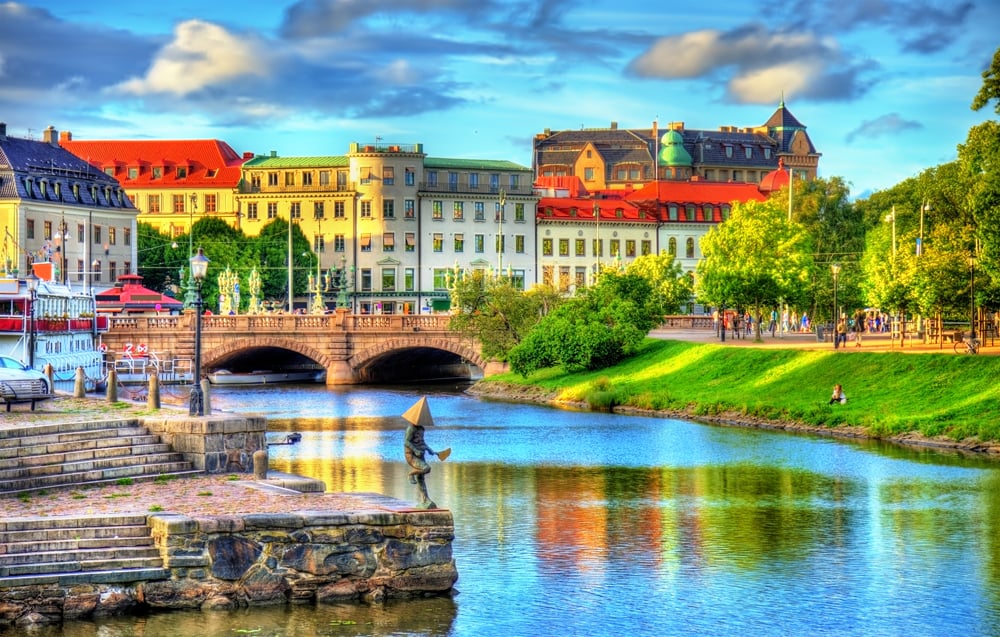
Discover the Charms of Gothenburg on a Swedish Vacation
Gothenburg is rarely the first place people visit on a Swedish vacation; that’d be the capital Stockholm. This makes Gothenburg, Sweden’s second-largest city, somewhat off the beaten track. But it’s by no means a backwater. A gorgeous city with a vibrant port heritage, Gothenburg is a wonderful place to live, work, and travel to. Don’t ignore it in favour of a trip to Stockholm. Make sure both cities are a part of your next Scandinavian vacation.
I lived in Gothenburg for a short time during my teenage years. Even though I’ve been to many different countries in the years since, it remains one of my favourite cities in the world. Part of this is its uncomplicated beauty. The old areas of the city such as Haga boast gorgeous Neo-Classical architecture, but much of the city consists of Functionalist buildings that do little to distract from the rugged natural environment. The city sits on a series of hills along the western coastline and rocks are a regular sight throughout its neighbourhoods.
As well, you’ll find few cities that are as abundantly green anywhere on the planet. Swedes in Gothenburg love their greenery and gardening is a common hobby for many residents. Gothenburg also lies on a series of Dutch-style canals, so it’s common to find yourself alongside the water.
Beyond its natural beauty, Gothenburg has a relaxed atmosphere. It’s an impressive city, but people here aren’t working hard to sell you on its magic. Its charms work in more subtle ways. Soon enough, its easygoing citizens, its rugged beauty, and its abundant cultural and artistic highlights will work their magic on you, revealing how comfortable and appealing Gothenburg is. Whether you’re travelling here on route to Stockholm or Copenhagen or making it a destination in its own right, Gothenburg deserves a visit. It’s a charming stop on a Swedish vacation.

History
Gothenburg has a rich history. The Dutch King Gustavus Adolphus founded it in 1621 as a royal trading port and it soon became one of the key trading cities in Scandinavia. Its position on the Gota River was key, and when the Gota Canal was constructed in the early 19th century, the city’s position only became more important.
As one of the most important Swedish cities, Gothenburg has a lot of historical architecture to explore. If you stroll along the canals or down Avenyn, you’ll spot attractive Neo-Classical buildings that date back to the 18th century. You can find a few buildings that date back further than the 18th century, such as the home of the Gothenburg Wind Orchestra off Kronhusgatan, but there are more interesting buildings within the city that demand your attention on your Swedish vacation.
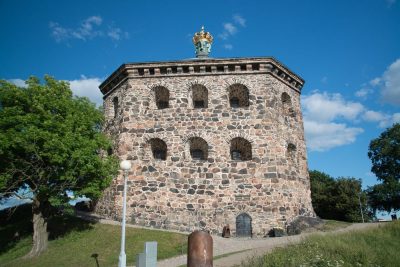
One such building is the Skansen Kronan Fortress, which overlooks the town from a hilltop just south of Haga. Completed in 1700, the fortress served as a defensive barricade against possible Danish attacks. When you visit, you’ll notice that the walls are between four to five metres thick, which was necessary to withstand cannon fire. Aside from the impressively thick walls and the rows of cannons that line its defensive perimeter, the fortress offers incredible views of the city from its hilltop. Alvsborg Fortress serves a similar function as the Skansen Kronan. It’s located on an island at the mouth of the Gota River and was built on the ruins of an old fortress (also known as Alvsborg) in the 17th century.
If you like classical architecture but aren’t interested in fortresses, spend your time strolling through picturesque Haga or along the canals. Stroll along the south side of the canal on Pusterviksgatan and you’ll spot the Feskekorka or Fish Church, a 19th-century fish market with a stunning design. Then cross Pusterviksbron and head east along Rosenlundsgatan to reach the market. Peruse the stalls and treat yourself to a herring sandwich if you wish to have a quintessential Swedish snack while there.

University Town
Gothenburg is one of Scandinavia’s foremost university towns. You’ll find the Chalmers University of Technology and the University of Gothenburg within its borders, both of which are some of the largest universities in the Nordic countries. It’s worth spending an hour or two exploring both university grounds as they each have some picturesque features. The University of Gothenburg has the massive Neo-Classical Main Building while Chalmers showcases the Kuggen, a stunning, cog-like structure of red-shaded terracotta panels. The building houses a library and student offices, but it is best known as one of the most appealing modern structures in Sweden.
Gothenburg’s interest in education and science extends beyond the university grounds. The Natural History Museum on the north end of Slottsskogen Park has a large collection of preserved animals, including many extinct birds. It also has one of the few stuffed blue whales in the world. Seeing the blue whale on display gives you a good sense of how massive the mammal truly is, something that isn’t easily comprehended from pictures and biology books.
If you’re travelling with children (or love science centres), you’ll want to head to the Universeum, which is a combination aquarium and science centre. The building straddles a hillside and incorporates the varied elevation into its structure. You begin at the top and journey through a variety of microclimates simulating the various natural zones of the world, from Swedish hinterland to tropical rainforests. After spotting electric eels and Atlantic cod, you reach the bottom of the building, where you’ll find several exhibits demonstrating scientific concepts in innovative ways. The Universeum offers a great way to spend an afternoon (I couldn’t get enough of it as a teenager).
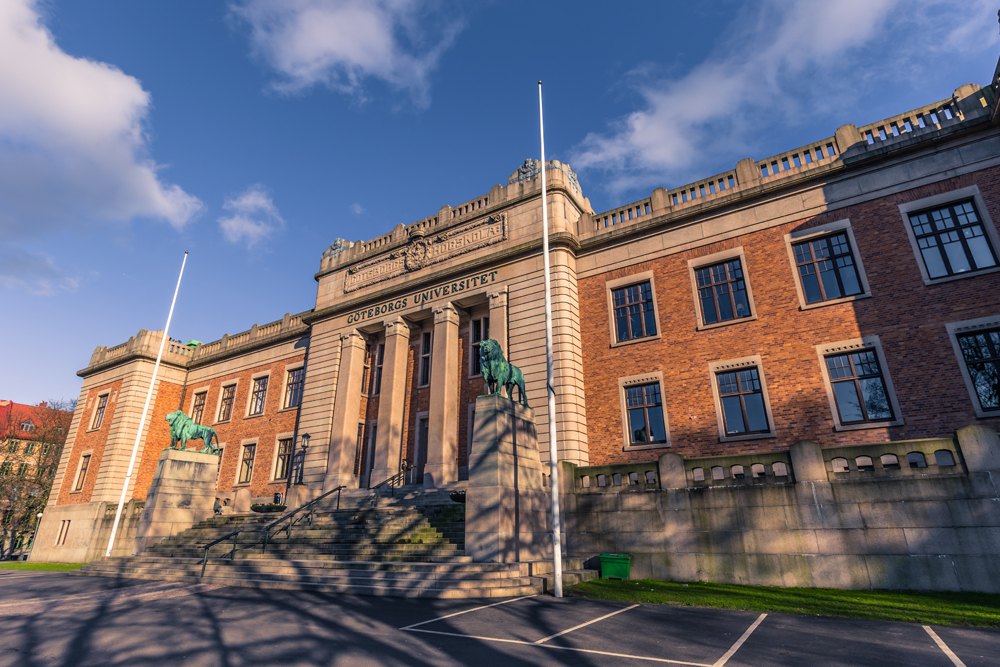
Arts and Culture
The flipside of Gothenburg’s university culture is its exceptional arts community. You’ll find many world-class museums within its borders as well as several festivals that attract the best artists from across the world. The Konstmuseum has the most acclaimed collection of artworks within the city. You can see paintings by Rubens, Rembrandt, and Van Gogh, as well as exceptional works by Scandinavian masters like Edvard Munch and Carl Larsson. For more contemporary works, head to the Goteborgs Konsthall, which showcases ground-breaking artworks in modern styles.
The Museum of World Culture offers all manner of exhibitions, workshops, and film screenings. If you’re lucky enough to visit at the end of January or early February, you’ll see the city play host to the Gothenburg Film Festival, the largest film festival in Scandinavia. During its 10-day run, the festival screens 450 films from 80 countries and is widely respected as one of the best festivals in the world. For music lovers, the Way Out West Festival takes place every August and brings popular rock, hip-hop, and electronic bands to the city.
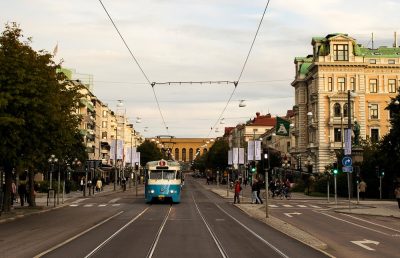
If you simply want to enjoy the city’s good restaurants and bars, wander down the Avenyn and you’ll find plenty of spots to while away the hours. One of the most charming things about Swedes is that they embrace sunshine and the outdoors as often as possible, so in the early weeks of spring, people will sip their coffees and read their magazines on outdoor patios when the air is still chilled, wrapping themselves with blankets against the cold.
It’s also worth mentioning Liseberg, which is the city’s amusement park and the largest amusement park in Scandinavia. It’s technically Sweden’s most popular attraction as it welcomes over three million visitors a year. It may not have the same cultural cachet as the Kontsmuseum or the Gothenburg Film Festival, but it’s a large theme park with several roller coasters and a charming Scandinavian atmosphere. If you’re exploring the city with kids on your Swedish vacation, visiting it is a no-brainer.
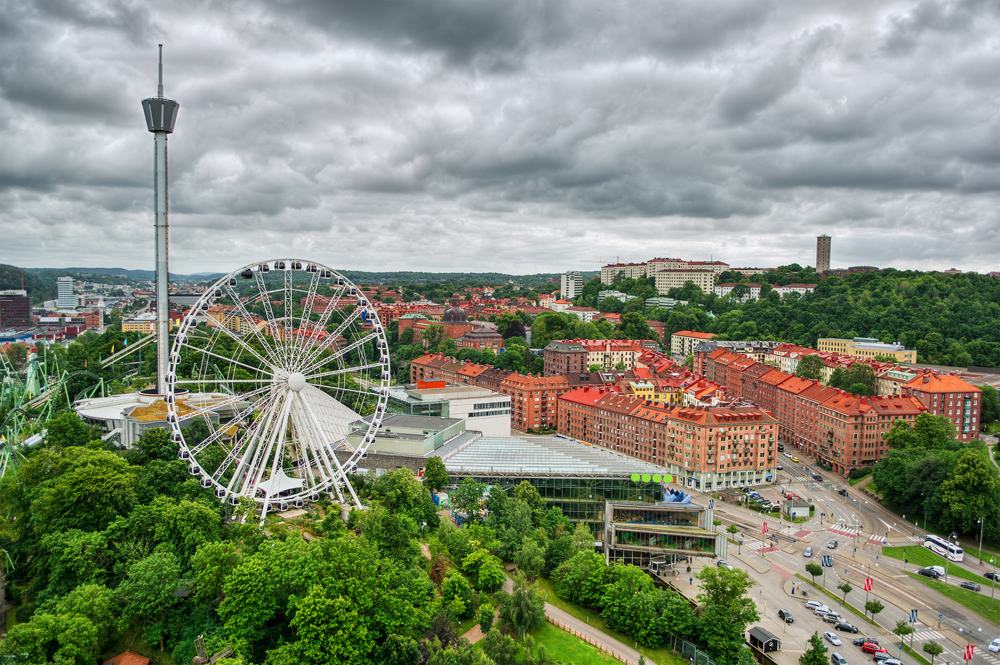
Nature and the Surrounding Islands
I mentioned in the opening that Gothenburg is a city of abundant nature. You’ll find rocky hills, bountiful forests, and deep-blue waters in and around the city thanks to its abundance of parks and canals. Slottsskogen is the largest park within the city grounds, with plenty of hiking trails and attractions like a petting zoo within its boundaries. You’ll also find the Gothenburg Botanical Gardens across the highway on the east side of the park. They’re some of the best gardens in all of Europe, demonstrating the Swedish dedication to gardening while also showcasing many endemic and transplanted plants. It’s also worth strolling through the Kungsparken, a picturesque and manicured park just across the canal from the city centre. There are few better places to spend a sunny afternoon.
During your time in Gothenburg, you need to fit in a visit to the Gothenburg Archipelago, a series of rugged islands off the west coast. It’s easy to visit the islands as you can ride the tram directly to the ferry terminal and across the water to the islands, using the same ticket the entire way. Cars are banned from the southern islands and you’ll only find sparse villages across the others, so you don’t need to worry about jockeying for space alongside other people. Hike along the rocky beaches, go for a frigid swim, or grab a lunch in one of the local cafes or bistros. A trip to the islands is a great way to spend a day and the perfect way to cap an exploration of Gothenburg.

It’ll never supplant Stockholm in the imagination of travellers, but Gothenburg is one of the great “second cities” of Europe. It has fascinating history, attractive architecture, world-class museums, a robust arts community, and a stunning natural landscape. Make room for a visit on your next trip to Scandinavia. You won’t regret it.
Get more travel inspiration by email.
Subscribe
0 Comments

Get the latest travel trends & hear about the best deals on vacations around the world.
If you’re a Globetrotter, these are the newsletters for you!



